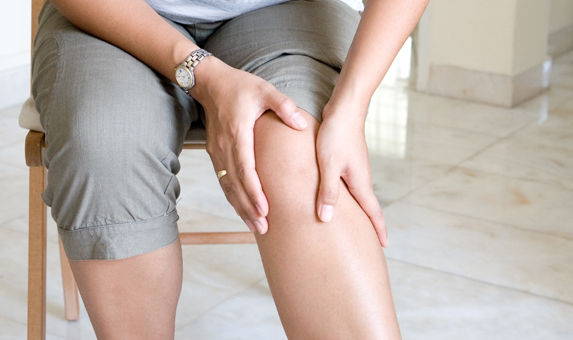Knee Pain-Causes
Many knee injuries are due to overuse, problems with alignment, sports or physical activities, and failure to warm up and stretch before exercise. But they can also result from trauma, such as a car accident, a fall or a direct blow to the knee. Weighing more than the acceptable ideal weight is one of the leading risk factors causing knee pain. Excess weight increases stress on the knee joints, even during ordinary activities such as walking or going up and down stairs. It also puts you at increased risk of osteoarthritis by accelerating the breakdown of joint cartilage.
Other Cause and risk factors that make you more susceptible to knee pain include;
Abuse: Any repetitive activity, from cycling a few miles every morning to gardening all weekend, can fatigue the muscles around the joints and lead to excessive loading stress. This causes an inflammatory response that damages tissue. If you do not allow the body time to recover, the cycle of inflammation and micro-damage continues, putting you at increased risk of injury. It is not repeated motion itself that is to blame, but rather the lack of adequate recovery time. That is why current strength training guidelines advice against working the same muscle group on consecutive days.
Lack of muscle flexibility or strength: According to experts, lack of strength and flexibility are among the leading causes of knee injuries. Tight or weak muscles offer less support to the knee because they do not absorb enough of the stress exerted on the knee joints.
Mechanical problems: Certain structural abnormal such as having one leg shorter than the other, misaligned knees and even flat feet can make you more prone to knee problems.
High-risk sports and activities: Some sports and activities put greater stress on the knees than others. Alpine skiing with its sharp twists and turns and potential for falls, basketballs jumps and pivots, and the repeated pounding the knees take when you run or jog all increase the risk of injury.
Previous injury: Having a previous knee injury makes it more likely that you’ll injure the knee again.
Age: Certain types of knee problems are more common in young people-Osgood-Schlatter disease and patellar tendonitis, for example. Others, such as osteoarthritis, gout and pseudo-gout, tend to affect older adults.
Some types of knee pain require more immediate medical care. Consult an Ortho-physician if you:
- Can not bear weight on the knee
- Have knee swelling
- See an obvious deformity in the leg or knee
- Have worrisome pain
- Have a fever, in addition to redness, pain and swelling in the knee, which may indicate an infection
Prevention: Although it is not always possible to prevent knee injury, the following suggestions may help forestall injuries and joint deterioration:
Keep extra pounds off: Maintaining a healthy weight is one of the best things you can do for the knees. Every extra Kilo puts additional strain on the joints, increasing the risk ligament and tendon injuries and even osteoarthritis.
Get strong, stay limber: Because weak muscles are a leading cause of knee injuries. You will benefit from building up the quadriceps and hamstrings, which support the knees. Try knee extensions, hamstring curls and leg presses to strengthen these muscles. Balance and stability training helps the muscles around the knees work together more effectively. Since tight muscles also can lead to injury, stretching is important. Try to include flexibility exercises in the workouts.
Be smart about exercise: if you have osteoarthritis, chronic knee pain or recurring injuries, you may need to change the way you exercise. That does not mean you have to stop being active, rather it does mean being smart about when and how you work out. If the knees ache after jogging or playing or other sports that give the joints a real pounding, consider consultation of a specialist of orthopedics.
Make sure the shoes fit well: if the shoe fits, you will be a lot safer Choose footwear that is appropriate for the sport. Running shoes are not designed for pivots and turns, for instance, but tennis and racquetball shoes are.
Baby the knees: Wearing proper gear for knee-sensitive activities can help prevent injuries. Use kneepads when playing volleyball and buckle the seat belt every time you drive.

